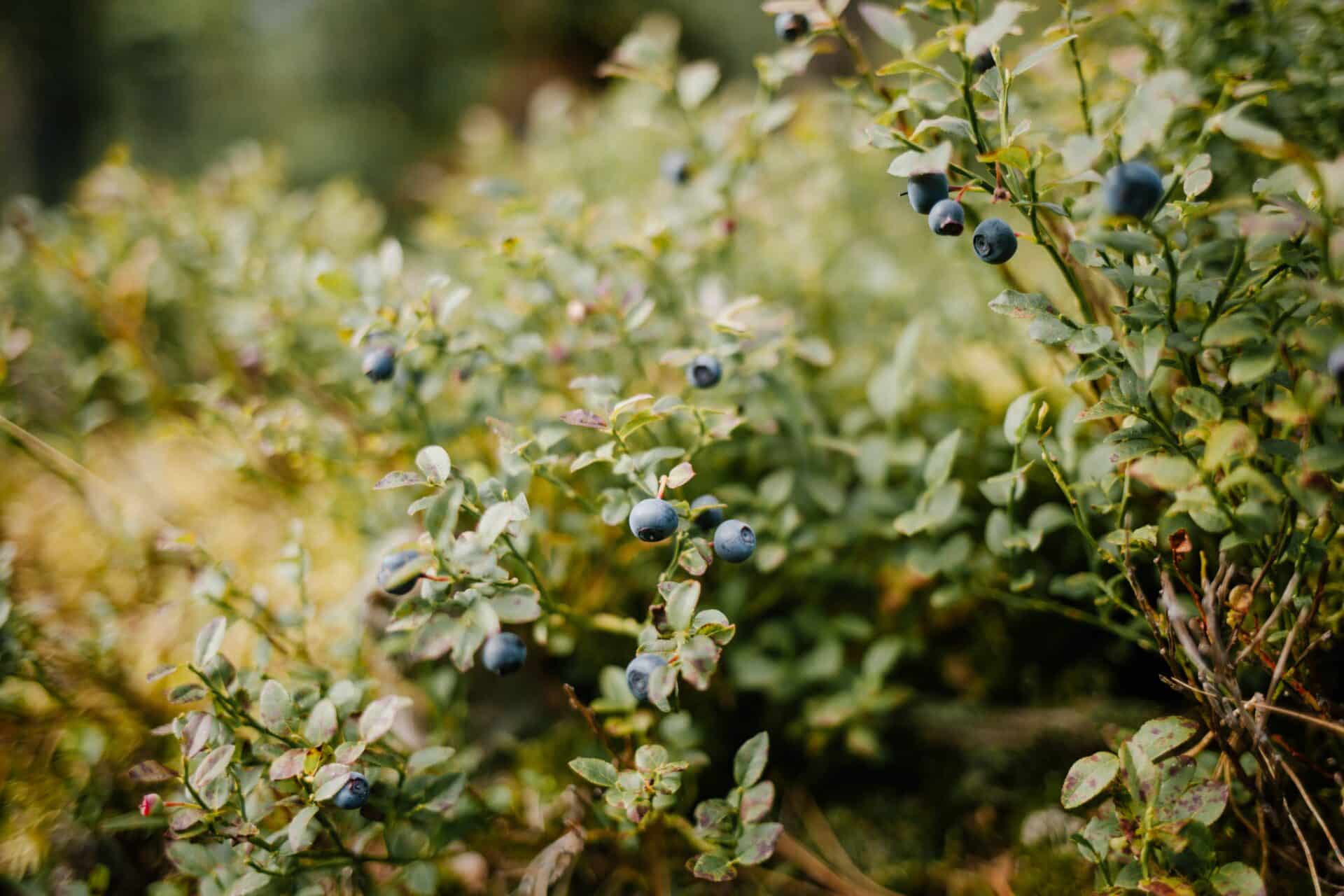Growing blueberry bushes can be a rewarding and enjoyable experience, but it does take some patience. It can take anywhere from two to five years for a blueberry bush to grow and produce fruit, depending on the variety. Knowing how long your particular bush will take to reach maturity is important so you can plan accordingly. In this article, we’ll explore what factors influence the growth of blueberry bushes and how long it typically takes them to grow.It typically takes between 3 to 5 years for blueberry bushes to reach full maturity and begin producing fruit.
Soil Type
One of the most important factors that can impact the growth of blueberry bushes is the type of soil they are planted in. Blueberry bushes prefer well-drained, slightly acidic soil with a pH of 4.5-5.5. The soil should also be high in organic matter such as compost or mulch to help retain moisture and provide nutrients for the plant. Soil that is too alkaline can cause stunted growth and poor fruit production, so it’s important to test the soil before planting blueberry bushes to ensure they will grow optimally.
Light Exposure
Blueberry bushes require plenty of sunlight throughout the growing season to produce quality fruit. They should be planted in a sunny location that gets at least 6-8 hours of direct sunlight each day, though some varieties may tolerate less light in cooler regions with shorter growing seasons. When planting multiple blueberry bushes, try to space them out evenly so they all receive adequate sunlight during the day.
Watering Schedule
Blueberry bushes need consistent moisture throughout their growing season, especially during hot summer months when fruit is beginning to ripen. Water deeply once or twice per week, depending on your climate and weather conditions, until established plants are producing fruit every year. Mulching around your blueberry bush can also help conserve moisture and reduce weeds around the root zone.
Fertilization
It’s important to fertilize blueberry bushes regularly to ensure optimal growth and production. Use a general purpose fertilizer such as 10-10-10 or 15-15-15 applied in early spring when leaves begin to emerge from dormancy for best results. Avoid high nitrogen fertilizers as these can cause excessive vegetative growth at the expense of fruit production.
Pruning
Pruning is an important part of maintaining healthy blueberry bushes over time. Prune out dead or diseased branches each year and cut back any weak or tangled branches that are competing for space on the bush. Prune out any excess suckers that appear near the base of older plants as well as any branches that have been damaged by pests or disease.
Soil Requirements for Growing Blueberry Bushes
Blueberry bushes require soil that is well-draining and slightly acidic. The soil should have a pH of 4.5 to 5.5, which is lower than most other plants. To achieve this, a soil additive such as sulfur or aluminum sulfate should be added to the soil before planting. The soil should also be rich in organic matter such as compost or peat moss to provide the bush with essential nutrients like nitrogen and potassium.
In addition to the pH level and nutrient content of the soil, blueberry bushes also need ample moisture for optimal growth. The plants should receive 1-2 inches of water per week during the growing season. Irrigation systems can be used to ensure adequate moisture but it is important not to overwater the plants as too much water can lead to root rot and disease.
Choosing the Right Location for Planting Blueberry Bushes
Planting blueberry bushes can be a great way to add a bit of beauty to your yard and enjoy some fresh fruit come harvest time. However, in order to get the most out of your blueberry bushes, it’s important to choose the right location for planting. Blueberry bushes need lots of sun, good drainage, and protection from strong winds. The soil should also be acidic, with a pH between 4.5 and 5.5.
Ideally, blueberry bushes should be planted in an area that gets 4-6 hours of direct sunlight each day. This will help ensure that the berries ripen properly and are full of flavor when harvest time comes around. Additionally, it’s important that the soil drains well so that the roots don’t become waterlogged or susceptible to fungal diseases like root rot.
Blueberries are also very susceptible to cold temperatures and strong winds, so it’s best to plant them somewhere sheltered from these elements if possible. A south-facing slope is ideal for planting blueberries since it will provide lots of sunshine but also block out cold winds during winter months. If you have an area like this in your yard, this would be an excellent spot for planting your blueberry bushes!
Finally, it’s essential to keep in mind that blueberries require an acidic soil with a pH between 4.5 and 5.5 in order to thrive. Before you plant your blueberry bushes, test the soil with a pH meter or pH testing strips so you can adjust its acidity if necessary with fertilizer or sulfur treatments before planting begins. With the right location and proper preparation, you’ll be able to enjoy delicious homegrown blueberries year after year!
Proper Pruning Techniques for Blueberry Bushes
Pruning blueberry bushes is an important part of keeping them healthy and productive. Proper pruning techniques will help ensure that the blueberry bush produces a large crop of berries each year. Pruning should begin when the bush is young and continue throughout its life. It is important to prune at the correct time of year, in order to ensure that the bush remains healthy and produces a high quality crop each year. Here are some tips on proper pruning techniques for blueberry bushes:
First, it is important to prune during the dormant season. This means waiting until after all leaves have dropped off the bush and before any new growth appears in spring. This will allow you to see all of the branches clearly, making it easier to make decisions about which ones need to be removed. It is also important to remove dead wood, diseased or damaged branches, and any branches that are growing too close together.
Next, always use clean tools when pruning blueberry bushes. This will help prevent the spread of disease and pests to other plants in your garden. Make sure your tools are sharp so that you can make clean cuts without damaging the branches or bark of the bush.
Finally, when removing branches from the blueberry bush, try not to remove more than one-third of its total growth each year. Removing too much at once can damage or weaken the plant, so it is important to be conservative with your pruning techniques. Also, make sure that you do not leave any stubs on the bush as this can cause rot and other diseases over time.
By following these tips on proper pruning techniques for blueberry bushes, you can help ensure that your plants remain healthy and productive for many years to come!

Planting Blueberry Bushes
Planting blueberry bushes is an excellent way to add a delicious and nutritious fruit to your garden. The best time to plant blueberry bushes is in the spring, after the danger of frost has passed. Choose a spot with full sun and well-drained soil for your blueberry bushes. Plant the bushes at least 4 feet apart, and dig a hole that is large enough so that the roots can spread out completely. Place the bush in the hole, fill it halfway with soil, and water it thoroughly. Then fill in the rest of the hole with soil and mulch around the base of the bush. It’s important to water your newly planted blueberry bush regularly for at least a month after planting.
Caring for Blueberry Bushes
Once your blueberry bush is established, caring for it is relatively easy. Water your bush once or twice per week during dry weather. Fertilize your bush once or twice per year with an organic fertilizer specifically designed for blueberries. Prune your bush each year by removing any dead or diseased branches, as well as any branches that are growing inward toward the center of the plant instead of outward away from it. If you notice any pests, such as aphids or birds, use organic pest control methods to get rid of them safely without harming other plants or animals in your garden. With proper care, you’ll be able to enjoy sweet and juicy homegrown blueberries year after year!
Fertilizing Requirements for Blueberry Bushes
Blueberry bushes require fertilizing in order to produce optimal yields. It is recommended to fertilize blueberry bushes with an acidic fertilizer such as ammonium sulfate or cottonseed meal. The fertilizer should be applied in the early spring, just before new growth begins. The amount of fertilizer needed will depend on the size and age of the bush, as well as the soil type. Additionally, a soil test should be conducted prior to fertilizing to determine any nutrient deficiencies that should be addressed with the fertilizer.
Watering Requirements for Blueberry Bushes
Blueberry bushes require consistent watering in order to remain healthy and reach their full potential yields. During the growing season, providing 1 inch of water each week is recommended. The best way to achieve this is by using a soaker hose or drip irrigation system for an even and consistent application of water. Additionally, mulching around the base of the bush can help retain moisture during hot and dry spells. During winter months, it is important not to overwater, as this could cause damage due to freeze-thaw cycles.
Protecting Your Blueberry Bushes from Pests and Disease
Growing blueberries can be a rewarding experience, but it is also important to be aware of potential pests and disease that can harm your plants. Knowing how to protect your blueberry bushes from these threats is essential to ensure a successful harvest. Here are some tips for protecting your blueberry bushes from pests and disease:
Start by selecting the right variety of blueberry bush for your climate and soil conditions. Different varieties are resistant to different types of pests and diseases, so it’s important to select the right variety for your specific area. Once you’ve selected the right variety, make sure to plant them in an area with good drainage and plenty of sunlight.
Next, practice good garden hygiene. This means removing any dead or decaying leaves and branches from around the plants as well as removing any weeds or other debris that can attract pests or harbor diseases. Make sure to prune the plants regularly as well, as this will help keep them healthy and vigorous.
Finally, use natural pest control methods when possible. Organic pesticides like neem oil or insecticidal soap can help keep harmful insects away without harming beneficial insects or other wildlife in the area. If you do need to use chemical pesticides, make sure to follow all instructions carefully and only apply them when absolutely necessary.
By following these tips, you can protect your blueberry bushes from pests and disease so that you can enjoy a successful harvest each year!

Conclusion
Blueberry bushes can take several years to fully mature and produce fruit. During this time, it is important to provide optimal growing conditions which include soil amendments, proper drainage, adequate sunlight and irrigation, and pest and disease control. Pruning should also be done regularly to encourage maximum yield and bush health. With the correct care and patience, gardeners can enjoy a plentiful harvest of fresh blueberries for years to come.
Growing blueberry bushes can be a rewarding experience when done correctly. Knowing how long it takes for the bushes to grow is essential in order to plan accordingly and ensure a successful harvest. Although they may take a few years before they reach full maturity, the resulting crop of sweet, juicy berries is worth the wait.



